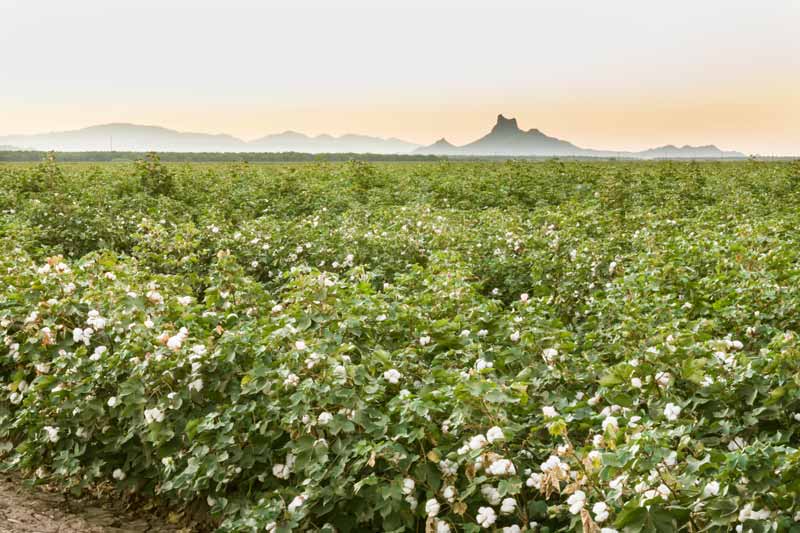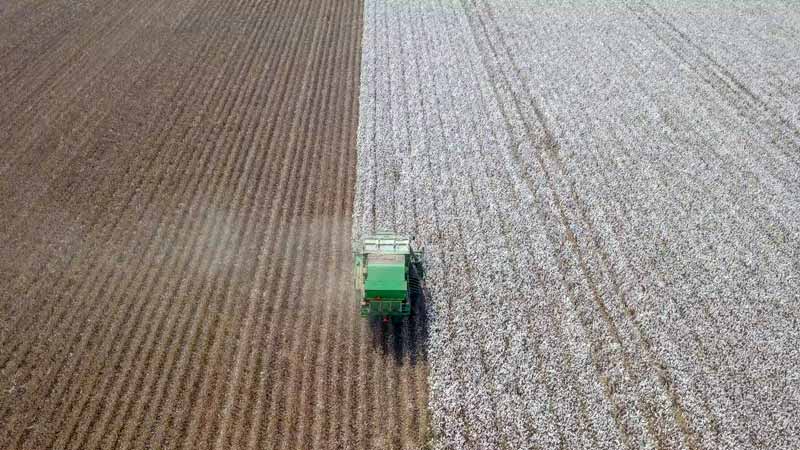Embracing the Potential of Regenerative Agriculture in Cotton Production

Shifting to regenerative agriculture practices can help growers improve their environmental footprint, but it’s not without its challenges. Successfully adopting these practices requires a transformation in farming systems and mindsets. To overcome these obstacles, it is necessary to combine education, resources and market incentives to support our farmers.
Let’s explore some of the key challenges the industry faces on this journey:
Cover Crop Seed Costs: Some regenerative agriculture practices call for specific cover crops or plants that may be more expensive than traditional varieties. While this can pose a financial challenge, investing in these seeds can be a crucial step.
Insufficient Water for Cover Crops: Adequate water is essential for cover crops to develop sufficient above and below-ground biomass or plant matter. However, in regions with limited water resources or during drought conditions, providing enough water can be a challenging task.
Pest Pressures: Regenerative agriculture practices promote the selective use of pesticides rather than complete elimination. However, it’s important to acknowledge that different pest challenges may arise. Farmers must remain vigilant in scouting for pests and be prepared to adjust to protect their crops during early growth stages.
Lack of Access to Organic Soil Amendments: Organic soil amendments like compost and manure can bevital for building soil health and fertility in regenerative systems. However, farmers may face challenges in accessing these materials due to cost or availability. Care must be taken to minimize the introduction of weed seeds when spreading organic materials.
Lack of Knowledge and Understanding: One of the primary challenges is the limited understanding of the risks and rewards associated with regenerative agriculture practices. Additionally, the lack of local information and resources makes it challenging for farmers to navigate the implementation process.
Economic Constraints: Some regenerative practices may require upfront investments in equipment or training, which can be financially burdensome, especially for small-scale operations. The industry must explore ways to make these practices more accessible and affordable for all farmers.
Risk Management: Transitioning to regenerative agriculture practices may involve more risk, particularly in the short term. Farmers need to learn new techniques and identify crops that work best for their specific farms and ecosystems. Sharing experiences and best practices within the agricultural community can help mitigate these risks.
Resistance to Change: Implementing regenerative farming practices may face resistance for various reasons. Landlords also play a significant role in inhibiting change on the farm. A lack of familiarity with regenerative practices and their benefits may restrict tenants from transitioning. Collaboration between farmers, landlords and industry stakeholders is crucial to encourage the adoption of regenerative practices.

Clarifying the Distinctions: Regenerative Agriculture vs. Regenerative Cotton
It’s important to understand the differences between regenerative agriculture practices and products labeled as regenerative cotton. While various regenerative cotton programs have recently emerged in the industry, many cotton growers have been implementing regenerative approaches, reducing environmental impact and sequestering carbon, even without participating in a specific program. It’s crucial to recognize that regenerative cotton can exist independently of a certification process, as it is based on the observed and measured outcomes on the farm.
Regenerative Agriculture vs. Organic Farming
Although they may appear similar, regenerative agriculture and organic farming are not interchangeable terms.
Regenerative Agriculture focuses on enhancing the ecological and social well-being of the farm and the community through tangible progress and outcomes. Organic, on the other hand, adheres to a set of guidelines outlined by the USDA or other certification schemes, primarily emphasizing the avoidance of synthetic pesticides and fertilizers [3].
Regenerative Agriculture places less emphasis on rigid guidelines and focuses more on outcomes such as improvements in soil health, overall land quality and the well-being of soil, water, plants, animals and humans [4].

Regional Considerations in Regenerative Agriculture
Successful implementation of regenerative agriculture often requires a deep understanding of local ecosystems and the development of region-specific practices that address the unique challenges faced in each area.
For example, the challenges encountered in practicing regenerative agriculture in Texas may differ significantly from those in Georgia due to variations in soil type, climate and water availability. Diverse soil compositions, ranging from sandy to clay, necessitate different approaches to regenerative agriculture management. Some regions may struggle with soil compaction, while others face issues related to depleted organic matter. As a result, expectations and management practices for cultivating healthy soil need to be tailored to suit the specific conditions of each region.
By understanding these distinctions and considering the regional nuances, the industry can foster a more comprehensive understanding of regenerative agriculture and its applications in cotton farming. By supporting growers who adopt regenerative practices and promoting transparency in the industry, the industry can also collectively contribute to the long-term sustainability and resilience of cotton production.
To learn more about the benefits of regenerative agriculture for growers, consumers and brands, click here.
THE LATEST

Water & Cotton
Discover the truth about cotton’s water usage. Is it really a water-thirsty crop? Learn about drought tolerance, water-saving practices, and how much water is needed to make a cotton t-shirt.
Cotton’s Natural Biodegradability: Water
Discover why cotton is a sustainable choice. Cotton is a biodegradable, drought-tolerant crop and helps reduce plastic waste in our oceans. Check the label for cotton and help save our water.
Amid Increasing Climate Change Challenges, Cotton Continues to Make Water...
Water remains one of the most important resources due it its impact on our everyday lives, especially as we work with our changing environment. The impact of climate change, however, has made it challenging for growers to manage this resource. Currently, nearly half...